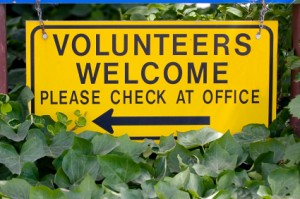4 Reasons to Keep Email in the Non-Profit Marketing Mix
Wednesday, September 29th, 2010 Good marketing can really help your nonprofit organization (NPO) stand out from the crowd. And standing out can mean the difference between bringing in donations and struggling.
Good marketing can really help your nonprofit organization (NPO) stand out from the crowd. And standing out can mean the difference between bringing in donations and struggling.
Over the past year or so, many charity organizations have found new supporters, reached out to their communities, and signed up volunteers through social media platforms like Facebook and Twitter. These are two fantastic ways to create a sense of community around your NPO, and to spread the word about events, accomplishments and needs.
But while Twitter and Facebook can reach far and wide, they are not the only ways NPO marketers should be engaging with their supporters and fans. Email is still a great communication tool that perhaps has been put aside in favor of the quick and easy updates on Facebook and Twitter.
4 Reasons to Keep Email in the Non-Profit Marketing Mix
- Email is more personal. When a supporter or volunteer receives a well-crafted email message, they pay attention. It’s important to find ways to create that one-on-one connection with your target audience. Email is also perceived as more professional than Facebook postings or Tweets.
- Email lasts. When a professionally-produced email message, like a newsletter or update, is your means of communication, it can easily be reproduced or archived on your website. A tweet is not forever. And some email recipients will keep your message around for awhile—you can’t say that about the fast-moving information stream of Facebook and Twitter.
- Email fosters two-way conversation. When a supporter opens the email and has a question, they can hit “reply” and start typing. They can keep their communication off the internet and private. Many of your volunteers and fans will appreciate such privacy.
- Email allows you to use and grow a valuable asset—your NPO’s email list. Why develop connections with people if you’re not going to leverage them? When people give you permission to send email by signing up on a list at an event, it’s because they actually want to hear from your nonprofit organization through email!







